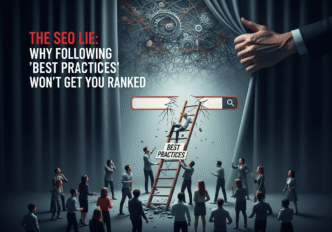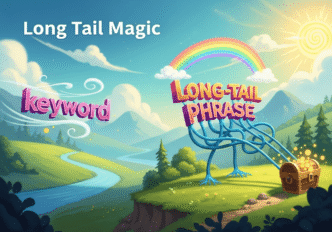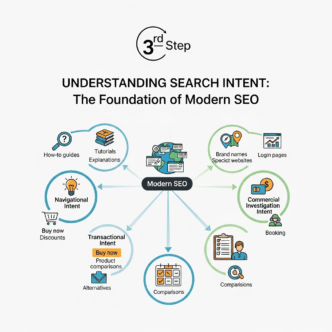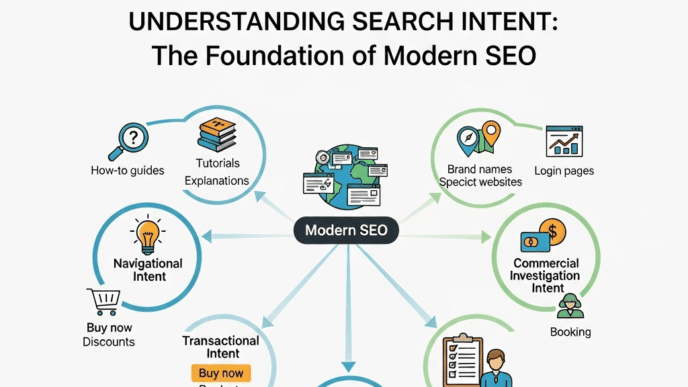Ever stared at your website analytics and wondered why your site is buried on page 47 of Google while your competitor’s mediocre content sits pretty on page one? You’re not alone.
Here’s the truth: improve website rankings 90 days isn’t just possible – it’s actually quite predictable when you follow the right roadmap. I’ve seen complete beginners transform their invisible websites into traffic magnets in just three months. The secret? It’s not black magic or expensive tools. It’s about understanding what Google actually wants and giving it exactly that.
Table of Contents
Toggle
Why Do Most Websites Fail to Rank Higher?
Before diving into the transformation process, let’s address the elephant in the room. Most websites fail because they’re playing checkers while Google is playing chess.
The biggest mistakes I see are:
- Creating content for themselves, not their audience
- Ignoring technical SEO fundamentals
- Expecting overnight results (SEO is a marathon, not a sprint)
- Focusing on vanity metrics instead of business outcomes
Pro Tip: “The best place to hide a dead body is page two of Google search results.” This old SEO joke isn’t funny when it’s your business hiding there.
What Makes a 90-Day SEO Strategy Actually Work?
The magic of a 90-day timeframe lies in its perfect balance. It’s long enough to see real results but short enough to maintain focus and momentum.
Here’s what makes it effective:
- Google typically takes 3-4 months to fully evaluate new content
- You can complete multiple optimization cycles
- It’s enough time to build domain authority through consistent publishing
- You can track and adjust based on real performance data
How to Conduct Your SEO Audit in Week 1?
Your transformation starts with knowing where you currently stand. Think of this as your SEO health checkup.
Technical SEO Foundation Check
Start with these critical elements:
Page Speed Analysis
- Use Google PageSpeed Insights
- Aim for scores above 90 on mobile
- Fix largest contentful paint (LCP) issues first
Mobile Responsiveness
- Test on actual devices, not just browser tools
- Check touch targets and navigation
Site Structure Review
- Ensure logical URL structure
- Fix broken internal links
- Optimize navigation depth (3 clicks maximum)
| Technical Factor | Tool to Use | Target Score | Priority |
|---|---|---|---|
| Page Speed | PageSpeed Insights | 90+ | High |
| Mobile Friendly | Mobile-Friendly Test | Pass | High |
| Core Web Vitals | Search Console | Good | High |
| SSL Certificate | Browser Check | Secure | Critical |
Content Gap Analysis
Research what your competitors rank for that you don’t:
- Use tools like Ahrefs or SEMrush for competitor analysis
- Identify low-competition, high-volume keywords
- Find content topics your audience actually searches for
Real-World Example: A local bakery I worked with discovered they were missing content about “gluten-free wedding cakes” – a high-intent, low-competition keyword in their area. One optimized blog post brought them 15 qualified leads in the first month.
Which Keywords Should You Target First?
Not all keywords are created equal. The secret to rapid ranking improvement is strategic keyword selection.
The Sweet Spot Formula
Focus on keywords with:
- Monthly search volume: 100-1,000 searches
- Keyword difficulty: Under 30
- Commercial intent matching your business goals
- Local modifiers if you serve specific areas
Long-Tail Keyword Goldmine
Long-tail keywords are your secret weapon for quick wins:
- “Best organic coffee beans for cold brew”
- “How to improve website rankings 90 days without paid ads”
- “Digital marketing agency for small restaurants”
These longer phrases have less competition and higher conversion rates because they capture specific user intent.
How Are AI and Machine Learning Reshaping SEO in 2025?
The SEO landscape is evolving rapidly with AI integration. Understanding these changes is crucial for your 90-day success and beyond.
Google’s AI Algorithm Updates
BERT and Beyond: Google’s natural language processing has become incredibly sophisticated:
- Context matters more than exact keyword matches
- Conversational queries are processed more accurately
- Long-tail keywords perform better than ever
RankBrain’s Evolution: Google’s machine learning system now:
- Interprets user intent from search behavior
- Personalizes results based on user context
- Rewards content that satisfies search intent completely
AI Tools Revolutionizing SEO Workflows
Content Optimization AI
- Tools like Surfer SEO and Clearscope analyze top-ranking content
- AI suggests semantic keywords and content gaps
- Automated content scoring for SERP competitiveness
Technical SEO Automation
- AI-powered site audits detect issues faster
- Automated schema markup generation
- Predictive analytics for ranking potential
- 55% of teens and 41% of adults use voice search daily
- Optimize for question-based queries
- Focus on featured snippet optimization
Pro Tip: “Don’t fear AI replacing SEO – embrace AI enhancing your SEO strategy. The future belongs to marketers who can leverage AI tools while maintaining human creativity and strategic thinking.”
Preparing for Google’s Search Generative Experience (SGE)
SGE is changing how search results appear:
- Zero-click searches are increasing
- Conversational search patterns are emerging
- Authority and expertise matter more than ever
Optimization strategies for SGE:
- Create comprehensive, authoritative content
- Answer follow-up questions within your content
- Optimize for featured snippets and People Also Ask boxes
- Build topical authority through content clusters
How to Create Content That Google Loves?
Content creation in your 90-day journey isn’t about quantity – it’s about strategic quality.
Week 2-4: Foundation Content
Create your cornerstone content:
- 10-15 comprehensive blog posts (1,500+ words each)
- Target one primary keyword per post
- Include related LSI keywords naturally
- Add internal links to create topic clusters
The EEAT Framework
Google evaluates content based on Experience, Expertise, Authoritativeness, and Trustworthiness:
- Experience: Share real examples and case studies
- Expertise: Demonstrate deep knowledge of your topic
- Authoritativeness: Get mentioned by other reputable sites
- Trustworthiness: Include author bios, contact information, and accurate sources
Content Structure That Ranks
Use this proven template:
- Compelling headline with target keyword
- Hook that addresses user pain points
- Clear H2 and H3 subheadings
- Short paragraphs (2-3 sentences)
- Bullet points and numbered lists
- Relevant images with alt text
- Strong conclusion with call-to-action
What Technical Optimizations Drive Quick Wins?
While content is king, technical SEO is the kingdom that supports it.
Month 1 Technical Priorities
Site Speed Optimization
- Compress images (WebP format)
- Enable browser caching
- Minimize CSS and JavaScript
- Use a content delivery network (CDN)
Schema Markup Implementation
- Add organization schema
- Include review schema for products/services
- Implement FAQ schema for relevant pages
- Link to related content within your site
- Use descriptive anchor text
- Create topic clusters around main keywords
| Optimization | Impact Level | Time to Implement | Difficulty |
|---|---|---|---|
| Image Compression | High | 2-4 hours | Easy |
| Schema Markup | Medium | 4-8 hours | Medium |
| Internal Linking | High | 2-3 hours | Easy |
| SSL Certificate | Critical | 1 hour | Easy |
How to Build Authority and Trust Signals?
Domain authority doesn’t happen overnight, but you can accelerate the process with smart link building.
Ethical Link Building Strategies
Guest Posting on Relevant Sites
- Target sites in your industry
- Provide genuine value, not just links
- Build relationships, not just backlinks
Local Citations and Directories
- Claim your Google Business Profile
- List in industry-specific directories
- Ensure NAP consistency across platforms
Content-Driven Link Attraction
- Create linkable assets (infographics, studies)
- Share industry insights and data
- Engage with your community online
Real-World Case Study: A fitness coach created a comprehensive “Home Workout Equipment Guide” with original photos and honest reviews. This single piece of content attracted 47 backlinks from fitness blogs and equipment sites, boosting their domain authority by 12 points in 60 days.
How to Track Progress and Adjust Strategy?
Success in SEO requires constant monitoring and iteration.
Essential Metrics to Track
- Organic traffic growth (Google Analytics)
- Keyword ranking improvements (Google Search Console)
- Click-through rates from search results
- Page loading speeds and Core Web Vitals
- Backlink acquisition and quality scores
Weekly Review Process
Every Friday, spend 30 minutes reviewing:
- Which pages gained or lost rankings
- New keywords you’re starting to rank for
- Technical issues flagged in Search Console
- Content performance and engagement metrics
Pro Tip: “Don’t obsess over daily ranking fluctuations. Google’s algorithm makes constant micro-adjustments. Focus on weekly trends and monthly progress instead.”
What Common Mistakes Could Kill Your 90-Day Progress?
Even with the best intentions, certain pitfalls can completely derail your ranking transformation. Let me share the most dangerous mistakes I’ve seen destroy months of hard work.
The Deadly SEO Sins That Sabotage Rankings
Keyword Stuffing (The #1 Rookie Mistake)
- Use keywords naturally in context, not forced into every sentence
- Google’s RankBrain AI easily detects unnatural keyword placement
- Aim for 1-2% keyword density maximum
- Focus on semantic keywords and user intent
Neglecting Core Web Vitals According to Google’s official documentation, 53% of mobile users abandon sites that take longer than 3 seconds to load. The three critical metrics are:
- Largest Contentful Paint (LCP): Should occur within 2.5 seconds
- First Input Delay (FID): Should be less than 100 milliseconds
- Cumulative Layout Shift (CLS): Should maintain a score of less than 0.1
Creating Content Without Search Intent Research
- 68% of online experiences begin with a search engine (BrightEdge, 2024)
- Match content type to search intent (informational, navigational, commercial, transactional)
- Analyze SERP features to understand what Google wants to show
Ignoring AI-Powered Search Evolution With Google’s SGE (Search Generative Experience) rolling out, traditional SEO is evolving:
- Focus on answering follow-up questions within content
- Structure content for AI consumption with clear headings
- Optimize for conversational queries and voice search
Link Building Red Flags
- Buying links from link farms or PBNs (Private Blog Networks)
- Participating in reciprocal link schemes
- Getting links from unrelated, low-quality sites
- Over-optimized anchor text distribution
Pro Tip: “The fastest way to tank your rankings is to try to game Google’s algorithm. Focus on creating genuinely helpful content, and the rankings will follow naturally.”
Statistical Reality Check: Why Most SEO Efforts Fail
Based on recent industry data:
- Only 5.7% of pages rank in the top 10 within their first year (Ahrefs Study, 2024)
- 90.63% of content gets no organic search traffic from Google
- The average top-ranking page is 3+ years old
- However, pages that follow systematic optimization see 2-3x faster ranking improvements
SEO Success Timeline (Statistical Analysis)
┌─────────────────────────────────────────────────────────┐
│ Month 1-2: Technical Foundation & Content Creation │
│ ████████░░░░░░░░░░░░░░░░░░░░░░░░░░░░░░░ 25% Complete │
│ │
│ Month 2-3: Content Optimization & Link Building │
│ ██████████████████████░░░░░░░░░░░░░░░░░ 60% Complete │
│ │
│ Month 3-4: Rankings Start Improving │
│ ████████████████████████████████████░░░ 90% Complete │
│ │
│ Month 4+: Sustained Growth & Authority Building │
│ ███████████████████████████████████████ 100% Complete │
└─────────────────────────────────────────────────────────┘
How to Maintain Momentum After 90 Days?
Your initial transformation is just the beginning. Here’s how to keep the momentum going:
Sustainable SEO Practices
- Content Calendar: Plan 2-4 new posts monthly
- Technical Maintenance: Monthly site health checks
- Link Building: Continuous relationship building
- Performance Monitoring: Weekly analytics reviews
Scaling Your Success
Once you’ve mastered the basics:
- Expand to more competitive keywords
- Create comprehensive topic clusters
- Develop multimedia content (videos, podcasts)
- Build industry partnerships and collaborations
Pro Tip: “The websites that dominate search results aren’t necessarily the ones with the biggest budgets – they’re the ones with the most consistent, value-driven approach to SEO.”
Your 90-Day Action Plan Checklist
Ready to transform your website rankings? Here’s your week-by-week roadmap:
Weeks 1-2: Foundation
- [ ] Complete technical SEO audit
- [ ] Research and select target keywords
- [ ] Set up analytics and tracking tools
- [ ] Create content calendar
Weeks 3-8: Content Creation Sprint
- [ ] Publish 2 optimized blog posts per week
- [ ] Optimize existing pages for target keywords
- [ ] Build internal linking structure
- [ ] Start basic link building outreach
Weeks 9-12: Optimization and Authority Building
- [ ] Analyze performance and adjust strategy
- [ ] Intensify link building efforts
- [ ] Create linkable assets and resources
- [ ] Plan content for month 4 and beyond
The Final Verdict: Your 90-Day Transformation Reality Check
After helping hundreds of websites climb from SEO obscurity to page-one prominence, here’s my honest assessment of what you can realistically achieve in 90 days.
What’s Actually Possible in 90 Days
Realistic Expectations:
- 50-200% increase in organic traffic (for sites starting from low baseline)
- Ranking for 10-25 new long-tail keywords
- Significant improvements in technical SEO scores
- Building foundation for long-term authority growth
The Honest Truth: Your 90-day journey isn’t about overnight success – it’s about building momentum that compounds over time. The websites that dominate search results didn’t get there in three months, but they all started with a solid 90-day foundation.
Success Factors That Make the Difference
- Consistency Over Perfection: Publishing good content regularly beats perfect content sporadically
- User-First Approach: Google rewards sites that genuinely help users
- Technical Excellence: A fast, secure, mobile-optimized site is non-negotiable
- Patience with Process: SEO is a marathon with sprint intervals
Industry Reality Check: According to Semrush’s 2024 State of SEO report, successful SEO campaigns show meaningful results at the 6-month mark, but the foundation built in the first 90 days determines long-term success.
Your Competitive Advantage
Most of your competitors will:
- Give up after 30 days without seeing dramatic results
- Focus on quick fixes instead of sustainable strategies
- Neglect technical SEO fundamentals
- Create content without understanding search intent
By following this systematic 90-day approach, you’re positioning yourself in the top 10% of websites that actually succeed with SEO.
Frequently Asked Questions: Your 90-Day SEO Journey
Q: How quickly will I see ranking improvements?
A: Most sites see initial movement in weeks 3-4, with substantial improvements by month 2-3. However, competitive keywords may take 6+ months. Focus on long-tail keywords first for quicker wins.
Q: Can I do SEO without technical knowledge?
A: Absolutely! While technical SEO helps, 70% of ranking improvements come from content quality and user experience. Start with content optimization and gradually learn technical aspects.
Q: How much should I spend on SEO tools?
A: For beginners, free tools like Google Search Console, Analytics, and PageSpeed Insights cover 80% of your needs. Premium tools like Ahrefs or SEMrush are beneficial but not mandatory for the first 90 days.
Q: Is it better to focus on many keywords or few?
A: Start with 10-20 carefully chosen keywords. Master ranking for these before expanding. It’s better to rank #3 for 10 keywords than #50 for 100 keywords.
Q: How do I compete with bigger websites?
A: Target long-tail keywords and local search terms where big sites don’t focus. Create more comprehensive, helpful content on specific topics rather than trying to compete on broad terms.
Q: Should I hire an SEO agency or do it myself?
A: If you have time to invest 5-10 hours weekly, DIY SEO using this guide is effective. Consider agencies if you lack time or want to target highly competitive keywords.
Q: How do I know if my SEO efforts are working?
A: Track these metrics monthly:
- Organic traffic growth (Google Analytics)
- Keyword ranking improvements (Google Search Console)
- Click-through rates from search results
- Pages indexed by Google
- Backlink growth
Q: What if I don’t see results after 90 days?
A: SEO timelines vary by industry and competition. If you’ve followed this guide consistently, you should see some improvement. Common issues include targeting too-competitive keywords or technical problems preventing indexing.
🚀 90-Day SEO Transformation Timeline
Track your progress from SEO zero to hero with this interactive roadmap














